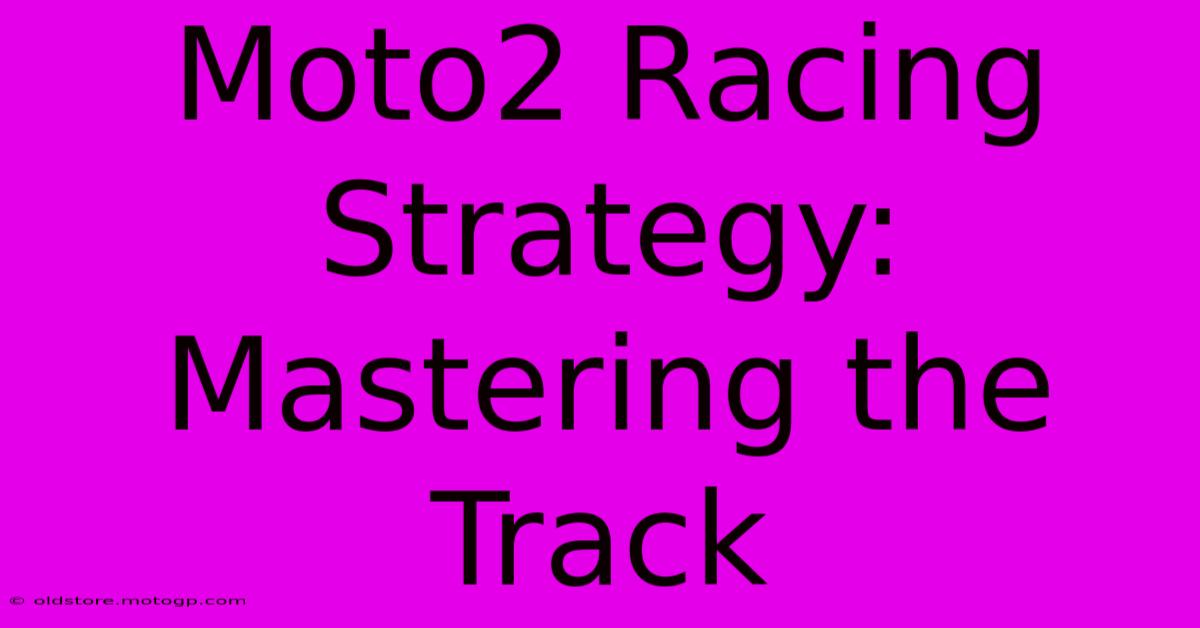Moto2 Racing Strategy: Mastering The Track

Table of Contents
Moto2 Racing Strategy: Mastering the Track
Moto2 racing demands a potent blend of raw speed, tactical acumen, and unwavering precision. Simply possessing a powerful machine isn't enough; success hinges on meticulously crafted strategies that exploit every opportunity on the track. This article delves into the key elements of a winning Moto2 strategy, exploring aspects from qualifying to the final checkered flag.
Qualifying: Setting the Stage for Success
A strong qualifying performance is paramount in Moto2. Starting further up the grid significantly improves your chances of a podium finish, minimizing the risk of early-race incidents and allowing for a cleaner race.
Key Strategies for Qualifying:
- Tire Management: Understanding tire degradation is crucial. Pushing too hard early can leave you struggling towards the end of the session. Finding the optimal balance between pace and tire preservation is key.
- Slipstream Tactics: Utilizing the slipstream of other riders, particularly in the final laps, can provide a significant speed boost, crucial for snatching those vital milliseconds.
- Track Conditions: Analyzing track temperature, grip levels, and even the wind direction can dramatically impact your qualifying performance. Adapting your riding style accordingly is essential.
- Data Analysis: Post-session data analysis allows you to pinpoint areas for improvement, optimize your setup, and refine your lines for the race.
Race Day: Executing the Plan
The race itself is where the real strategic battles unfold. Managing tire wear, fuel consumption, and maintaining consistent pace are just a few of the challenges riders face.
Crucial Race Day Considerations:
- Race Pace vs. Qualifying Pace: Maintaining a consistent race pace, rather than pushing for unrealistic lap times early on, is vital for preserving your tires and ensuring you're still competitive in the closing stages.
- Overtaking Strategies: Identifying overtaking opportunities requires an understanding of your bike's strengths and weaknesses, as well as your opponents' riding styles. Knowing when and where to make your move is critical. Braking points, corner exits, and utilizing slipstreams are all part of this equation.
- Tire Management (Race): Tire degradation accelerates during the race. Strategic tire management, including understanding the optimal tire pressure and temperature for different sections of the track, is paramount to a consistent performance.
- Fuel Strategy: Moto2 races often require fuel management strategies, especially in longer races. This involves adapting your pace to conserve fuel while still maintaining a competitive position.
- Awareness of Competitors: Staying aware of the positions and strategies of your rivals is critical. Knowing when a rival is conserving tires or fuel can inform your own strategy.
- Adaptability: The ability to adapt to changing track conditions (like rain or debris) or unexpected events (like safety car periods) is a crucial skill for a successful Moto2 racer.
Pit Strategy: The Unsung Hero
While often overlooked, pit strategy plays a significant role in Moto2 racing. The timing and execution of pit stops can make or break a race.
Elements of Pit Strategy:
- Tire Choice: Choosing the right tire compounds for different track conditions and race stages is crucial.
- Pit Stop Timing: The timing of the pit stop is often determined by factors like tire wear, fuel levels, and the race situation.
- Efficiency: A swift and efficient pit stop can minimize time lost and maintain your competitive edge.
Beyond the Track: The Importance of Preparation
Success in Moto2 is not solely dependent on on-track performance. Off-track preparations are equally crucial.
Pre-Race Preparations:
- Fitness Training: Moto2 racing is physically demanding. Maintaining peak physical condition is essential for both race performance and injury prevention.
- Data Analysis & Simulation: Analyzing past race data and using simulation tools can help refine strategies and predict outcomes.
- Teamwork: Strong communication and collaboration with the team – engineers, mechanics, and crew – are vital for optimal performance.
Mastering Moto2 racing requires a sophisticated understanding of the technical aspects of the machines, tire management, and race strategy, coupled with unwavering dedication and mental fortitude. By meticulously planning and adapting to the ever-changing circumstances on the track, a rider can significantly improve their chances of victory. The combination of on-track skill and strategic thinking is what truly defines a champion in the demanding world of Moto2 racing.

Thank you for visiting our website wich cover about Moto2 Racing Strategy: Mastering The Track. We hope the information provided has been useful to you. Feel free to contact us if you have any questions or need further assistance. See you next time and dont miss to bookmark.
Featured Posts
-
Moto2 Pushing The Limits Of Performance
Feb 19, 2025
-
Circuit Of The Americas The Ultimate Racing Destination
Feb 19, 2025
-
Moto Gp Replay The Best Way To Appreciate Moto Gp
Feb 19, 2025
-
Yamaha Moto Gp The Heart Of Moto Gp Racing
Feb 19, 2025
-
Moto Gp Sprint A Deep Dive Into The Format
Feb 19, 2025
